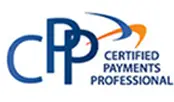Credit card chargebacks — when customers contact their credit card issuers to dispute charges and have their money returned — have risen by more than 20% over the last year, and are hitting smaller merchants — both brick and mortar and E-retailers — the hardest.
The cost of paying for fraudulent or disputed credit card transactions used to be covered by credit card companies, but shifted to the retailers in October 2015. According to a recent report, eCommerce fraud rates have risen by 11% since the shift. When chargebacks become frequent, they can severely hurt online retailers’ bottom lines. In addition to the returned credit for the sale, merchants get lumbered with a charge by the credit card carrier which can range between $30 – $100.
Merchants were estimated to have been hit with $5.8 billion in chargebacks in 2016 and US card fraud losses could exceed $12 billion by 2020. While brick and mortar stores have adopted electronic chip readers to reduce risk, this technology does little to help online retailers who work with CNP (card not present) transactions. So what steps can online retailers take to prevent them?
Avoid misleading marketing and be upfront with your purchase terms
Merchants need to be aware of the most common reasons why chargebacks are approved and avoid these circumstances at all costs. The five most common causes include:
- Fraudulent transactions — when a credit card is used without the authorization of the cardholder.
- Credit Not Processed — when a cardholder receives an item different from what they expected and returns the item, but claims the credit was not returned to their account.
- Item Not Received — when the customer claims they did not receive the item for which they paid.
- Technical Problems — being charged twice, being charged even when an order is cancelled, or human error when processing a payment.
- Goods or Services Not as Described — consumer feels that the description or quality of product is not the same or to the standard as described by vendor.
A 2016 study by researchers at the Federal Reserve Bank of Kansas City found that the overwhelming majority of successful chargebacks — 80 to 90% — from 2013 to 2014 were accepted due to merchant liability. “While many of the above problems are out of the retailer’s control, there are measures which online vendors can take to reduce chargebacks for ‘Goods or Services Not as Described’,” researchers wrote.
Many chargebacks are the result of misleading marketing or products which don’t deliver on their descriptions. Considering issuing banks generally side with consumers over retailers, it is essential to be straight-forward and honest when describing products. It is one thing to take visually appealing photos with aesthetic backdrops to enhance the product, it is another to lie and mislead consumers about what you are offering. Be especially careful when listing materials; don’t think that consumers — and credit card carriers — won’t raise eyebrows if you are selling Egyptian silk or 24 carat gold products at discount store prices.
Websites should also have very clear, legible and easy to understand return policy and refund policy in the terms and conditions. Many customers win chargeback disputes by saying they were not made aware of the terms and agreements, so make sure that the information is clearly placed on your payment page, or make consumers click to agree to the conditions.
Cover your back for CNP transactions
Some large retailers like Walmart, Kroger, Home Depot, Target and Best Buy have begun using chip-based card readers to reduce risk of card fraud, but this technology does little to help online merchants who rely entirely on CNP transactions.
However, just because the transaction is CNP does not mean that online retailers cannot cover their backs. During the online checkout process, merchants should provide more verification steps to avoid fraudulent charges, such as using an AVS (Address Verification Service), which will check the billing address of the credit card provided by the user with the address on file at the credit card company. Other steps include requiring the input of CVV numbers which are printed on the back of physical cards as well as taking advantage of payments providers’ extra security measures such as Mastercard SecureCode and Verified by VISA.
Retailers should also limit the chance of their data being hacked by using SSL (Secure Sockets Layer), the standard security technology for establishing an encrypted link between a web server and a browser. This will limit the chance of stolen data being used in the future, which will in turn increase the chances of chargebacks.
Learn from your mistakes
E-retailers who are too focused on growth and don’t pay attention to where the company is losing money are doomed to repeat mistakes. Every chargeback should be treated as a learning experience, which can be used to improve your service in the future.
While many chargebacks are due to valid consumer grievances, others simply have “purchase regret” or are trying to get something for free. Recent studies show 50 percent of cardholders who file a friendly fraud chargeback — when a customer forgets they made a transaction, doesn’t recognize billing name, or orders by mistake — when accepted, will try to do it again within 90 days.
Consequently, it is important to monitor your chargebacks for patterns. If you see a chargeback scenario that occurs often or a repeat “friendly fraud” offender, you can identify the problem and fix it. Often times it could be as easy as making a small update to your terms and conditions, or blocking a user from your system.
Improve your customer support
It is important to have efficient customer service systems in place to deal with clients who are unhappy with their product, or cancel post purchase. Rather than get hit with a chargeback fee from a card issuer on top of the credit returned to a client, it is always better to resolve client returns and complaints internally.
Some small eCommerce businesses lack the labor bandwidth to have a full customer support team, however, but make the mistake of listing a customer support line on their website. If a company does not have the resources to staff their support line efficiently, it is better to funnel customer support via email, a web form for the customer to contact you or using bots for live chat, than risk missing calls and forcing clients to make chargebacks. Be sure to respond to any inquiries within a maximum of 24 hours.
With as many as 90% of chargebacks being approved by credit card companies, retailers need to step up their game in preventing card fraud and reducing the amount of legitimate chargebacks, too. The risks are especially high for online retailers, but rather than accepting defeat, E-retailers need to provide the highest level of service possible and use every chargeback as a learning experience to both keep clients happy and orders flying in.




